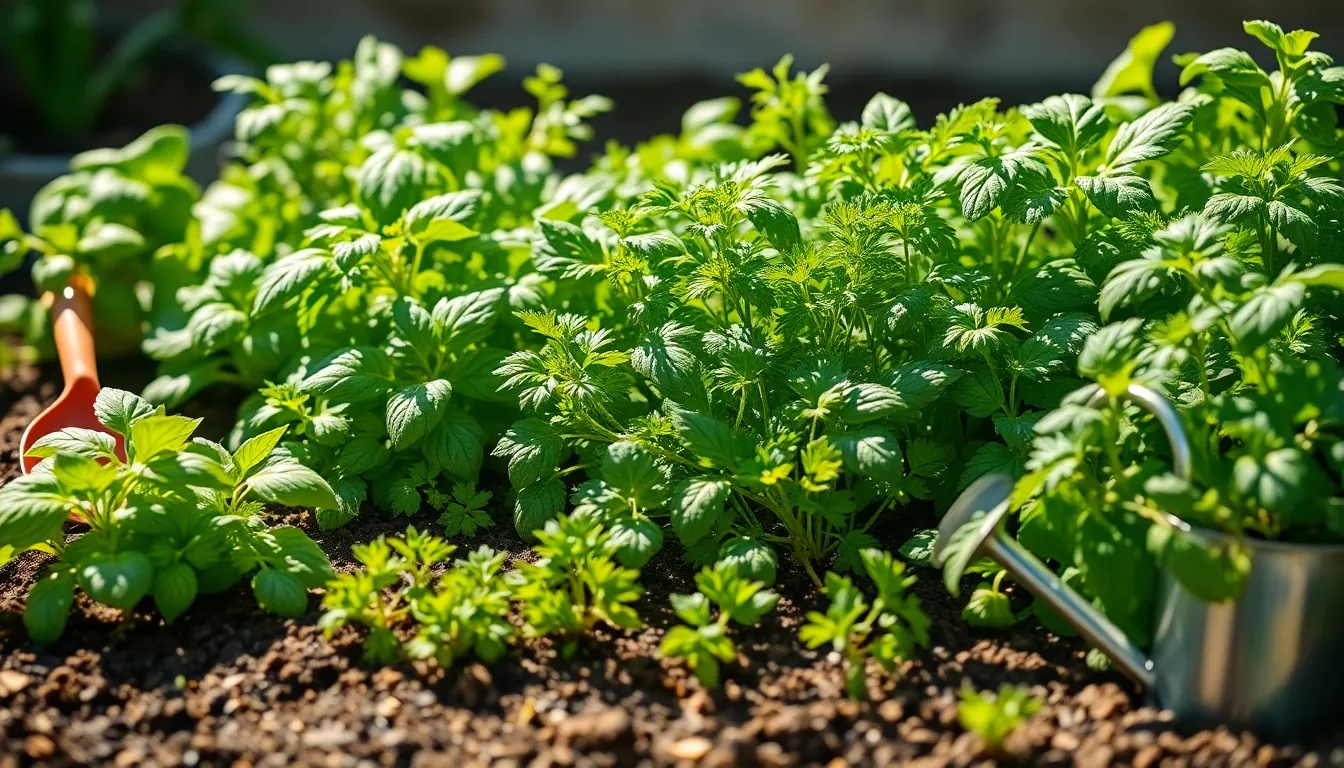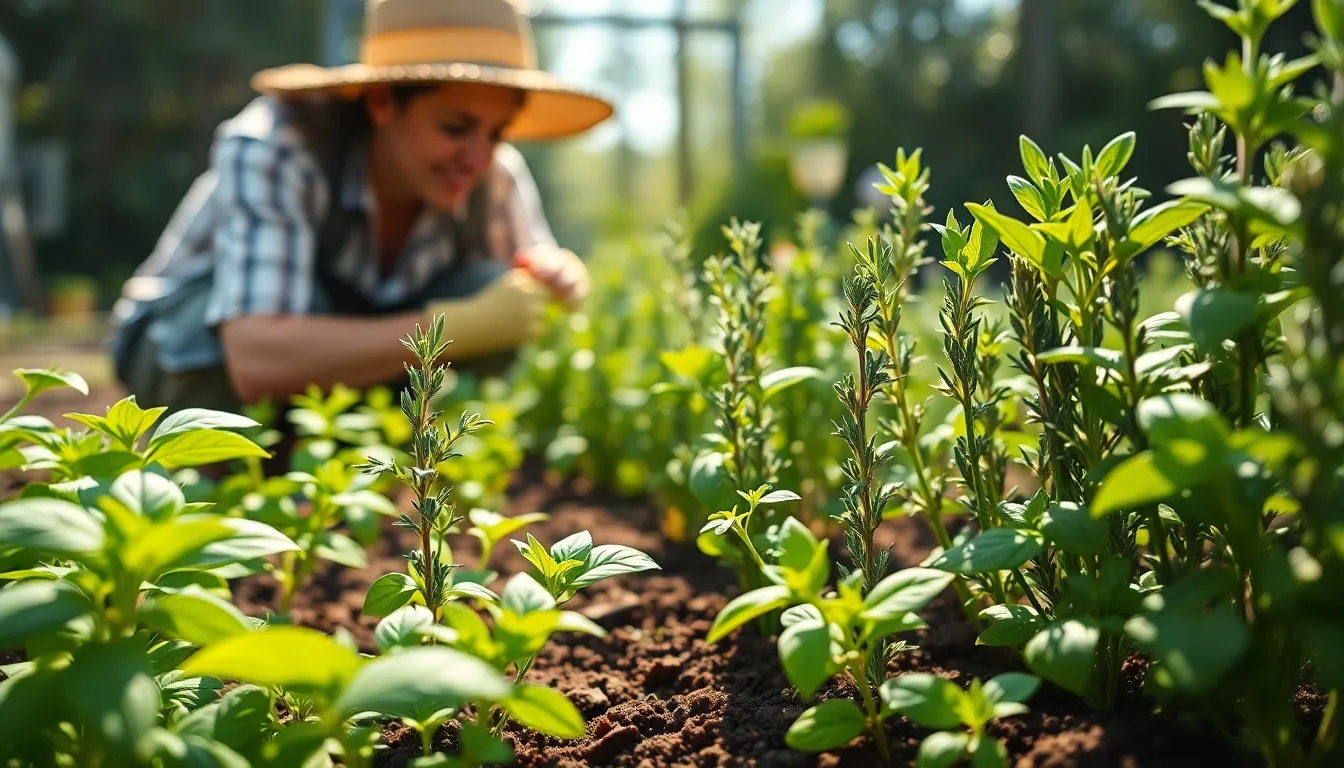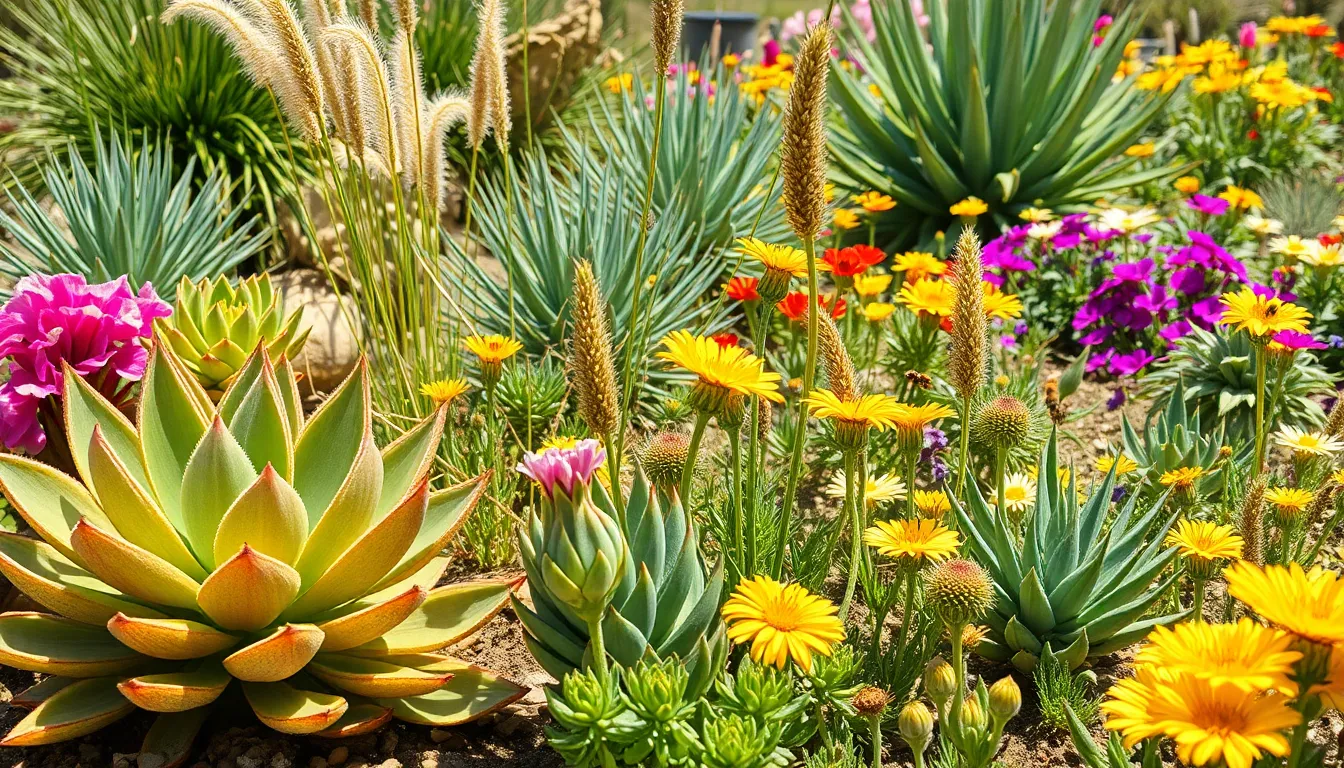Herbs are more than just flavorful additions to meals; they’re packed with essential nutrients that can enhance overall health. Understanding their unique nutrition needs is crucial for anyone looking to cultivate a thriving herb garden. From basil to rosemary, each herb has specific requirements that impact its growth and potency.
Providing the right balance of nutrients not only ensures robust plants but also maximizes their culinary and medicinal benefits. Whether you’re a seasoned gardener or a novice, knowing how to nourish these plants effectively can lead to a bountiful harvest. By delving into the nutritional needs of herbs, gardeners can unlock the full potential of their green companions.
Table of Contents
ToggleOverview of Herb Nutrition Needs
Herbs require specific nutrients for robust growth and maximum flavor development. Key nutrients include nitrogen, phosphorus, potassium, calcium, magnesium, and sulfur. Each plays a vital role in plant health.
- Nitrogen: Essential for leaf development and overall growth. High nitrogen levels support lush, green foliage.
- Phosphorus: Crucial for root development and flowering. A phosphorus-rich environment promotes strong root systems and enhances flowering in herbs.
- Potassium: Important for overall plant vigor and disease resistance. Potassium helps in water regulation and enhances oil production in aromatic herbs.
- Calcium: Necessary for cell wall structure and growth regulation. Calcium prevents issues like blossom end rot in herb plants.
- Magnesium: Vital for chlorophyll production and photosynthesis. Adequate magnesium levels ensure vibrant green leaves and higher yields.
- Sulfur: Important for protein synthesis and flavor development. Sulfur contributes to the pungency of certain herbs, like garlic and onions.
Soil quality also impacts herb nutrition. Healthy, well-drained soil with organic matter supports nutrient availability. Regular soil testing identifies nutrient deficiencies and helps in formulating appropriate fertilization strategies.
Water quality affects nutrient uptake. Chlorine and fluorine in tap water can hinder nutrient absorption. Rainwater or filtered water often provides a better alternative.
Understanding these essential nutrition needs contributes to successful herb gardening. Through effective management of these nutrients, gardeners can maximize both the health and flavor profile of their herbs.
Essential Nutrients for Herbs

Herbs require a balance of essential nutrients for optimal growth and flavor production. These nutrients can be categorized into macronutrients and micronutrients, each playing a critical role in herb health.
Macronutrients
Macronutrients consist of elements that herbs need in larger quantities to thrive. The primary macronutrients include:
- Nitrogen: Crucial for leaf development, nitrogen fosters lush, green foliage and overall plant vigor.
- Phosphorus: Important for root growth and flowering, phosphorus enhances the formation of strong root systems and supports blooming.
- Potassium: Enhances plant vigor and disease resistance, potassium aids in regulating water use and strengthening plant health.
Secondary macronutrients also contribute to herb vitality:
- Calcium: Essential for cell structure, calcium strengthens cell walls, which is vital for robust growth.
- Magnesium: Integral for chlorophyll production, magnesium supports photosynthesis, helping herbs thrive under sunlight.
- Sulfur: Associated with flavor development, sulfur enhances the aromatic qualities of herbs, making them more appealing.
Micronutrients
Micronutrients are required in smaller amounts but are equally important for overall herb health. Key micronutrients include:
- Iron: Essential for chlorophyll synthesis, iron prevents yellowing of leaves and promotes healthy growth.
- Manganese: Important for photosynthesis and enzyme function, manganese supports additional growth processes.
- Zinc: Contributes to growth hormone production, zinc aids in leaf expansion and overall herb development.
- Copper: Plays a role in photosynthesis and enzyme activation, copper supports optimal biochemical functions.
Ensuring the right ratios of these macronutrients and micronutrients promotes healthy, flavorful herbs. Regular soil testing can help gardeners maintain nutrient balance for higher yields and robust plant health.
Nutritional Requirements by Herb Type
Understanding nutritional needs based on herb type ensures optimal growth and flavor profiles. Both culinary and medicinal herbs require specific nutrient balances to thrive.
Culinary Herbs
Culinary herbs, such as basil, parsley, and thyme, thrive on balanced macronutrients.
- Nitrogen promotes lush foliage, enhancing flavor intensity in herbs like basil.
- Phosphorus supports root development, important for herbs with extensive root systems, like cilantro.
- Potassium boosts overall vigor and disease resistance, benefiting herbs such as oregano and sage.
- Calcium reinforces cell structures, contributing to robust growth in leafy herbs.
- Magnesium aids in chlorophyll production, critical for herbs like mint, which rely on vibrant green leaves.
- Sulfur enriches flavors, especially in herbs like garlic chives.
Micronutrients, including iron, manganese, and zinc, also play vital roles. Their presence helps with photosynthesis and enzyme activity, enhancing the culinary potential of these herbs.
Medicinal Herbs
Medicinal herbs, including echinacea, ginseng, and peppermint, have distinct nutritional requirements.
- Nitrogen drives vegetative growth, crucial for medicinal properties, especially in plants like echinacea.
- Phosphorus facilitates root and flower development, enhancing the potency of medicinal flowers.
- Potassium encourages resilience against pests and diseases, increasing the therapeutic efficacy of herbs like ginseng.
- Calcium supports structural integrity, vital for herbs with medicinal uses, such as valerian.
- Magnesium enhances metabolic processes, promoting the active compounds in herbal medicines.
- Sulfur contributes to aromatic properties, important for soothing herbs like peppermint.
Essential micronutrients such as copper, zinc, and boron support the synthesis of important compounds for health benefits. By utilizing appropriate soil amendments, gardeners ensure both culinary and medicinal herbs achieve optimal nutrient levels, ultimately leading to stronger flavor and enhanced health properties.
Growing Conditions Affecting Herb Nutrition
Growing conditions significantly impact herb nutrition needs. Factors such as soil quality and watering practices play a crucial role in nutrient availability and plant health.
Soil Quality
Soil quality directly influences herb growth and nutritional content. Nutrient-rich, well-draining soils support robust herb development.
- pH Levels: Most herbs thrive in slightly acidic to neutral soil with pH levels between 6.0 and 7.0. Soil testing helps determine if amendments are necessary.
- Organic Matter: Incorporating organic matter, like compost, enhances soil structure, increases nutrient retention, and promotes beneficial microbial activity.
- Drainage: Well-drained soils prevent waterlogged conditions that can lead to root rot. Herbs such as rosemary prefer sandy soils, while basil thrives in loamy soils.
Watering Practices
Watering practices significantly affect nutrient uptake in herbs.
- Frequency: Regular watering is vital, yet overwatering can leach nutrients away from the root zone. Most herbs prefer the soil to dry slightly between waterings.
- Method: Drip irrigation or soaker hoses provide consistent moisture levels without waterlogging, improving nutrient absorption.
- Water Quality: Using rainwater or filtered water free from chlorine and chemicals enhances nutrient assimilation. Water with high mineral content can influence herb flavor profiles and health.
By managing soil quality and watering practices, gardeners can ensure optimal nutrient availability for herb growth and health.
Common Nutrient Deficiencies in Herbs
Herbs can exhibit various nutrient deficiencies that impact their growth and health. Identifying these deficiencies helps ensure optimal herb nutrition.
- Nitrogen Deficiency: Leaves turn yellow, starting from older leaves. Growth stunts, and the plant appears weak. Increased foliage can enhance flavor in herbs, making nitrogen crucial.
- Phosphorus Deficiency: Dark, dull leaves with purple hues arise, especially on older leaves. Stunted root development can hinder flowering, directly affecting yield.
- Potassium Deficiency: Leaves may develop brown edges or tips. Symptoms include wilting and reduced disease resistance, leading to decreased vigor and increased susceptibility to pests.
- Calcium Deficiency: New growth appears distorted, and tip burn may occur on young leaves. Calcium supports cell structure and overall plant health, making its presence vital.
- Magnesium Deficiency: Leaves exhibit interveinal chlorosis, where yellowing occurs between veins of older leaves. This deficiency impacts chlorophyll production, reducing photosynthesis efficiency.
- Sulfur Deficiency: Young leaves turn yellow, resembling nitrogen deficiency symptoms. However, sulfur is essential for flavor compounds in herbs, enhancing their taste.
- Iron Deficiency: New leaves show yellowing with dark green veins, as iron is critical for chlorophyll synthesis. Affected plants demonstrate reduced growth and vitality.
- Manganese Deficiency: Symptoms include brown spots on leaves and yellowing between veins. Manganese plays a role in photosynthesis and enzyme function, crucial for healthy herb growth.
- Zinc Deficiency: Reduced leaf size and distorted growth appear, with potential chlorosis. Zinc influences hormone levels and overall plant vigor, making supplementation necessary in deficient soils.
Regular soil testing identifies nutrient levels, allowing gardeners to address deficiencies proactively. Understanding these common deficiencies aids in optimizing herb nutrition for improved growth and enhanced flavor.
Understanding the nutrition needs of herbs is essential for anyone looking to cultivate a thriving garden. By focusing on the right balance of macronutrients and micronutrients, gardeners can significantly enhance both the growth and flavor of their herbs. Proper soil quality and watering practices play a crucial role in meeting these nutritional requirements.
Regular soil testing helps identify deficiencies that could hinder herb development. With the right care and attention, both culinary and medicinal herbs can flourish, providing not only delicious flavors but also valuable health benefits. This knowledge empowers gardeners to achieve a more fruitful and rewarding herb garden.




